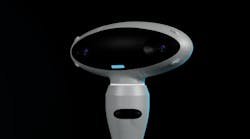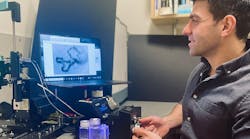AUGUST 31--Recent technological breakthroughs are likely to impact the microscopy industry positively. This upswing will grow further following large-scale digitalization and growth in related fields such as image reconstruction and restoration, according to researchers at Frost & Sullivan, a global growth consulting company (www.frost.com). For instance, Germany's Carl Zeiss Jena GmbH and the Cornell center for technology, enterprise, and commercialization now make pioneering biomedical microscopic imaging available deep inside living tissue with unprecedented clarity.
Demand for more sophisticated microscopic instrumentation will rise as companies develop advanced engineering, industrial, and electronic materials. These technical enhancements assist participants to overcome longstanding bottlenecks, especially lens aberration, noted for limiting the resolution of the best electron microscopes in the past.
"Most manufacturers offer consumers options of ready-to-use modular systems from which a researcher can choose the needed components," explains Frost & Sullivan research analyst Katherine Austin. "On the other end, custom-assembled systems, designed to user-specifications, appeal to many researchers." Offering custom-assembled systems allow end users the advantage of incorporating existing workflows or equipment and hold added attraction over modular tools.
"Many developers are beginning to see the market advantages of integration, offering total systems designed for a particular application," says Ms. Austin. "For instance, nondestructive testing of materials and live-cell imaging combined with chemical or binding analysis are some of the cost-effective combinations preferred by researchers."
However, tight research budgets due to government cutbacks and the high cost of instruments can hinder the R&D process of microscopy equipment. These cutbacks are nevertheless offset by the allocation of billions of dollars by government agencies globally for nanotechnology research where microscopy instrumentation plays a major role. Grants by European authorities are also on the rise, stepping up research in sectors such as quantum dots in the United Kingdom and x-ray imaging without lenses in Berlin.
Overall, this market is expected to grow consistently, especially following the increasing automation and the resulting easy-to-use equipment. There are exciting developments in electron confocal microscopy and laser scanning cytometry in combination with progress in the quantum dots arena. The global race toward miniaturization is another major driver in Europe, with breakthroughs such as Switzerland's miniature lightweight atomic force microscope (AFM) and Nanosurf's Mobile S AFM.
If you are interested in an analysis that provides manufacturers, end users, and other industry participants with an overview of the Emerging Technologies in Microscopy, send an e-mail to Magdalena Oberland, Corporate Communications, at [email protected].




